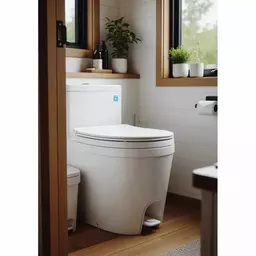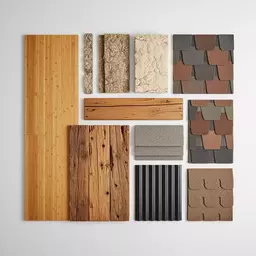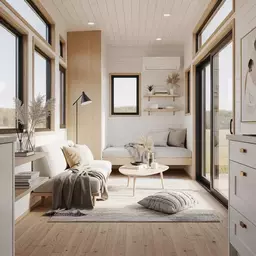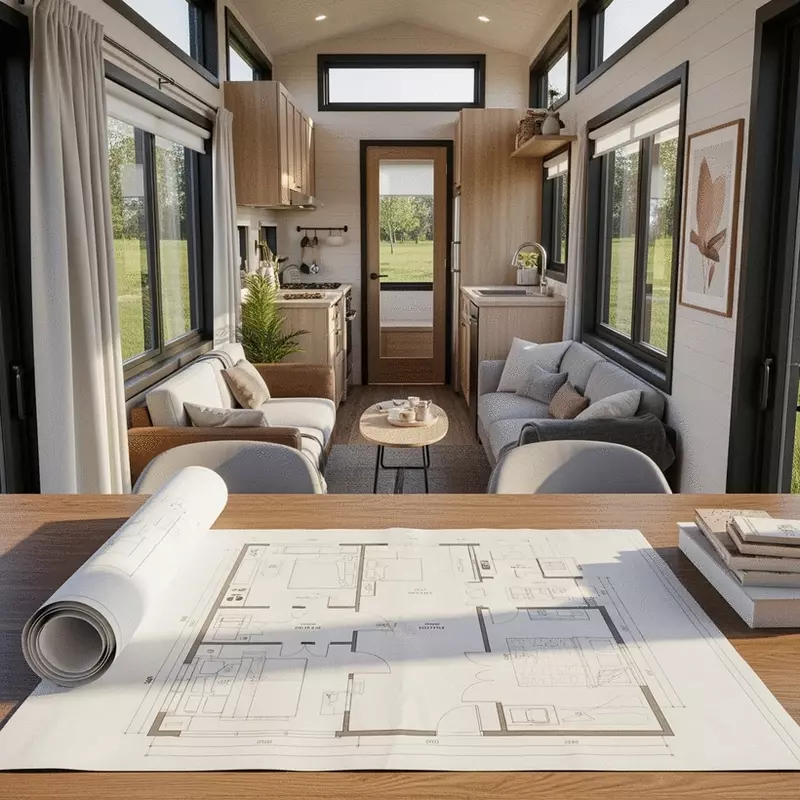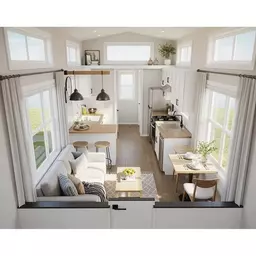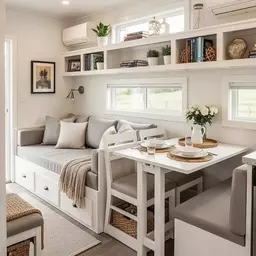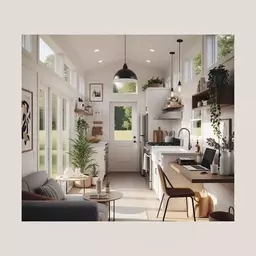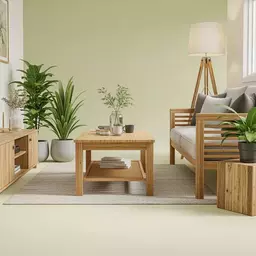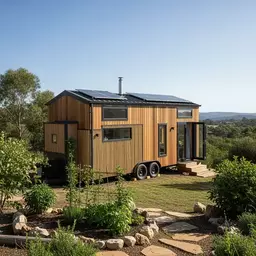Designing Energy-Efficient Tiny Home Plans
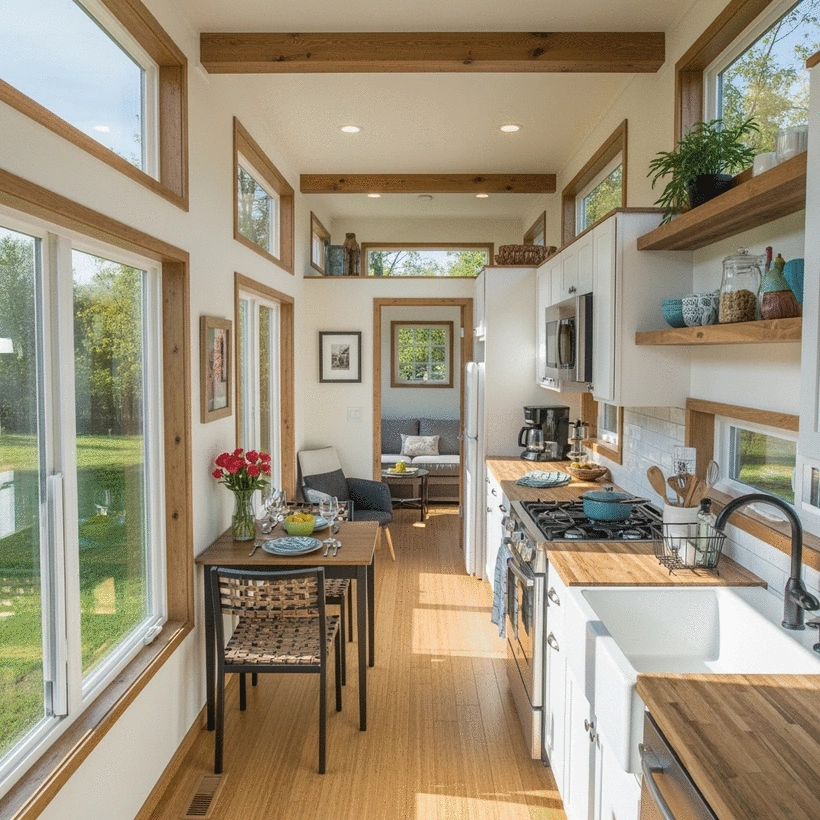
As we explore the transformative potential of tiny homes, it's essential to understand how passive solar design can significantly enhance our living experience. By embracing these principles, you not only create a cozy atmosphere but also contribute to a more sustainable future. Ready to discover how to make the most of natural energy? Let’s dive into the key insights!
What You Will Learn
- Passive solar design utilizes the sun's energy for heating and cooling, reducing energy costs and enhancing comfort.
- Key components include solar orientation, thermal mass materials, and effective shading strategies that work together for optimal energy efficiency.
- Understanding solar gain is crucial for maintaining a comfortable indoor environment throughout the year.
- Combining passive solar design with renewable energy solutions, like solar panels and rainwater collection, maximizes sustainability.
Key Components of Passive Solar Design
Delve into the three essential components that drive energy efficiency in tiny homes, shown below in a side-by-side comparison. For more ideas on how to optimize your living space, explore our 2025 Tiny Home Design Ideas.
Solar Orientation
Strategic positioning of your home to maximize winter sun exposure and minimize summer heat gain.
Thermal Mass Materials
Materials like concrete or brick that absorb and store heat during the day, releasing it at night.
Shading Strategies
Features such as awnings and overhangs to control sunlight exposure and prevent overheating.
Renewable Energy Integration
Combining passive design with solar panels or rainwater systems for enhanced sustainability.
Understanding Passive Solar Design Principles for Tiny Homes
At Luxe Tiny Homes, we believe that embracing passive solar design principles is key to crafting energy-efficient living spaces that resonate with the Australian lifestyle. But what exactly is passive solar design, and why is it so important? Simply put, it's a building approach that utilizes the sun's energy for heating and cooling without the need for mechanical systems. This not only reduces energy costs but also enhances comfort and sustainability in our tiny homes.
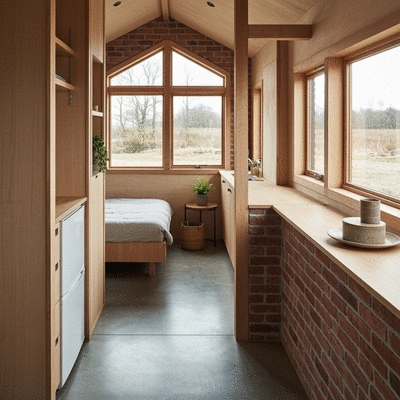
Investing in passive solar design is crucial for anyone considering tiny living. By optimizing your home to take advantage of natural light and thermal energy, you can significantly lower your environmental impact while enjoying a more comfortable atmosphere. Are you ready to discover how these principles can transform your tiny home experience?
What is Passive Solar Design and Why is it Important?
Passive solar design is all about harnessing solar energy by thoughtfully planning your home's layout, orientation, and materials. This approach reduces reliance on traditional heating and cooling methods, ultimately leading to a more sustainable lifestyle. Imagine living in a space where sunlight not only brightens your day but also contributes to a cozy warmth without running up your energy bill! For more on sustainable materials, check out our guide on Sustainable Materials for Tiny Homes.
- Maximizes natural sunlight
- Enhances thermal comfort
- Reduces energy consumption
- Supports eco-friendly living
As we delve deeper into the core components of passive solar design, you'll see how each element plays a vital role in creating a tiny home that's not only beautiful but also highly functional.
Core Components of Passive Solar Design
Understanding the core components of passive solar design can significantly inform your tiny home project. Here are the essential elements to consider:
- Solar Orientation: Properly orienting your home to capture sunlight.
- Thermal Mass Materials: Using materials that can absorb and store heat.
- Shading Strategies: Implementing solutions to control sunlight exposure.
Each of these components is integral to ensuring that your tiny home is energy-efficient and comfortable throughout the year. Let’s explore these aspects in more detail!
The Role of Solar Orientation in Energy Efficiency
The orientation of your tiny home can have a profound impact on energy efficiency. By positioning your living spaces towards the south, you can maximize sun exposure during winter, providing natural warmth and light. This strategic placement allows for passive solar gain, which can significantly decrease your heating needs.
In Australia, where sunlight is abundant, leveraging solar orientation is a game-changer. By planning your layout carefully, you can enjoy brighter days and warmer evenings, making your tiny home feel more inviting!
Utilizing Thermal Mass Materials for Optimal Heat Storage
Incorporating thermal mass materials into your design is another way to enhance energy efficiency. Materials like concrete, brick, and stone can absorb heat during the day and release it at night, keeping your home comfortable around the clock. Imagine a cozy evening in your tiny sanctuary, warmed by the very walls that store the sun’s energy!
- Concrete or brick floors
- Stone walls
- Adobe or rammed earth materials
Choosing the right materials not only supports a sustainable lifestyle but also adds character and warmth to your tiny home.
Effective Shading Strategies to Enhance Comfort
Effective shading strategies are crucial to maintaining comfort in your tiny home. By implementing features such as awnings, overhangs, or strategically placed trees, you can shield your living spaces from the harsh summer sun while still allowing winter sunlight to pour in. This balance makes a world of difference!
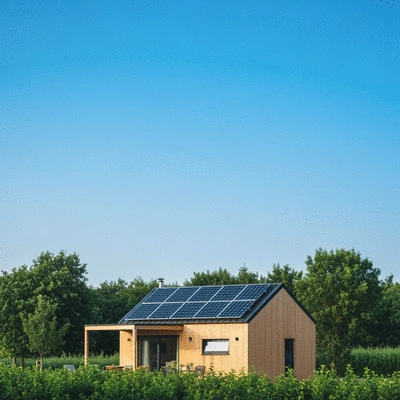
Consider how you can integrate these shading elements into your tiny home design. Not only do they enhance comfort, but they also contribute to energy savings!
Incorporating Renewable Energy Solutions in Passive Solar Design
While passive solar design employs natural methods for heating and cooling, integrating renewable energy solutions can take your energy efficiency to the next level. Combining these solutions with passive design maximizes sustainability in your tiny home.
- Solar panels to harness additional energy
- Rainwater collection systems for sustainable water use
- Wind turbines for supplementary energy generation (where feasible)
By incorporating these elements, you can create a tiny home that not only reduces your carbon footprint but also empowers you to live more sustainably every day!
Understanding Solar Gain and Its Impact on Energy Efficiency
Solar gain refers to how much sunlight is absorbed through windows and other surfaces, which directly affects your home’s temperature. Understanding solar gain is key in designing your tiny home to optimize heating during the colder months and prevent overheating in warmer periods. This balance is essential for maintaining a comfortable living environment!
By calculating the right amount of glazing and using energy-efficient windows, you can control the amount of solar gain, allowing you to enjoy a cozy, sustainable tiny home.
The Benefits of Integrating Solar Panels with Passive Design
Integrating solar panels into your passive solar design can help you achieve energy independence. With the right setup, you can generate your own electricity, reducing utility bills and reliance on fossil fuels. Imagine a life where you’re not just living sustainably but thriving, powered by the sun!
Additionally, solar panels can work hand-in-hand with passive design features, enhancing energy efficiency while promoting a more sustainable lifestyle.
Pro Tip
To maximize the benefits of passive solar design, consider using energy-efficient windows that minimize heat loss during the colder months. Look for double or triple glazing options, which can significantly enhance your home’s insulation and further reduce your energy costs. This small yet impactful choice can make your tiny home even more comfortable and sustainable!
Frequently Asked Questions About Passive Solar Design for Tiny Homes
What is passive solar design?
Passive solar design is a building approach that uses the sun's energy for heating and cooling without mechanical systems, reducing energy costs and enhancing comfort and sustainability.
What are the key components of passive solar design?
The key components include solar orientation (positioning the home to maximize sun exposure), thermal mass materials (absorbing and storing heat), and shading strategies (controlling sunlight exposure to prevent overheating).
How does solar orientation benefit a tiny home?
Strategic solar orientation, especially positioning living spaces towards the south, maximizes winter sun exposure for natural warmth and light, significantly decreasing heating needs and making the home more inviting.
What are thermal mass materials, and why are they important?
Thermal mass materials like concrete, brick, and stone absorb heat during the day and release it at night, helping to maintain a comfortable indoor temperature around the clock. They enhance energy efficiency and add character to the home.
Can passive solar design be combined with renewable energy solutions?
Yes, integrating renewable energy solutions like solar panels and rainwater collection systems with passive solar design can further enhance sustainability, reduce your carbon footprint, and help achieve energy independence.
Next Steps for Implementing Passive Solar Features
Now that you have a grasp on the principles of passive solar design, it’s time to take actionable steps to incorporate these features into your tiny home. Whether you’re starting from scratch or looking to enhance an existing design, there are a wealth of resources available to guide your journey toward a more sustainable living environment.
As an advocate for minimalist living, I often recommend immersing yourself in the wealth of information available. This not only strengthens your understanding but also ignites your creativity. Let’s explore some valuable resources and considerations!
Resources for Further Learning and Inspiration
To truly embrace passive solar design, consider accessing various resources that can deepen your knowledge and inspire your choices. Here are some options to explore:
- Books on passive solar architecture and tiny home design
- Online courses focusing on sustainable design practices
- Webinars and workshops by experts in the field
- Social media groups and forums dedicated to tiny home living
These resources not only provide insights but also connect you with a community of like-minded individuals. At Luxe Tiny Homes, we often share valuable tips on our platform, so be sure to check out our blog for the latest insights!
When to Consult Professionals for Your Tiny Home Project
While DIY projects can be incredibly rewarding, there are times when it’s beneficial to bring in the experts. Consulting professionals can save you time, ensure compliance with local regulations, and enhance your project’s overall efficiency. Here are some scenarios where professional input can be invaluable:
- Complex design elements that require advanced skills
- Permitting processes that may be difficult to navigate alone
- Specialized knowledge in energy modeling and sustainability
- Assistance with sourcing eco-friendly materials
Having a solid support system can make the difference between a smooth build and a challenging one, so don’t hesitate to reach out for help when needed!
Understanding Energy Modeling to Optimize Your Design
Energy modeling is a powerful tool that helps you visualize how your tiny home will perform in terms of energy efficiency. By simulating various scenarios, you can make informed choices about your design and materials. Here are the key aspects to consider:
- Utilizing software tools to analyze energy consumption and solar gain
- Conducting simulations based on local climate conditions
- Evaluating the impact of design changes on energy efficiency
- Adjusting your plans to optimize natural light and ventilation
At Luxe Tiny Homes, we believe that understanding energy modeling can significantly enhance the effectiveness of your passive solar features. This way, you’re not just designing a home; you’re creating an energy-efficient haven that promotes sustainable living!
Summarizing the Benefits of Energy-Efficient Tiny Home Design
By now, you’re well on your way to embracing the benefits of energy-efficient tiny home design. Let’s take a moment to reflect on the long-term advantages of incorporating passive solar features into your build.
Long-Term Advantages of Passive Solar Features
Passive solar design not only enhances comfort but also provides considerable long-term advantages. Here’s what you can look forward to:
- Reduced energy costs through efficient heating and cooling
- A smaller carbon footprint, contributing to environmental preservation
- Enhanced indoor comfort and natural lighting throughout the year
- Increased property value due to sustainable design features
Embracing these advantages aligns perfectly with our mission at Luxe Tiny Homes to promote a sustainable lifestyle while providing beautiful, functional spaces!
Encouraging Sustainable Living and Eco-Friendly Practices
As we navigate through modern life, it’s essential to encourage sustainable living and eco-friendly practices in our communities. By adopting passive solar design, you set a powerful example for others. Here are some tips to inspire sustainable practices:
- Host workshops to share knowledge about tiny home living
- Engage with local environmental groups to promote sustainable initiatives
- Utilize your platform to advocate for eco-friendly practices in construction
- Lead by example through your own sustainable lifestyle choices
By taking these steps, we can foster a culture of sustainability that resonates beyond our own homes.
Exploring the Tiny House Movement and Its Impact on Carbon Footprint
The tiny house movement is more than a trend—it's a lifestyle shift that significantly impacts our carbon footprint. As we collectively embrace smaller living spaces, we contribute to a larger goal of environmental sustainability. For those looking to start their journey, consider exploring how to start your custom tiny home to make a positive environmental impact. Here are some of the movement's key benefits:
- Decreased reliance on resources due to smaller living spaces
- Promotion of minimalist living, reducing consumerism
- Encouragement of community and shared resources among tiny home dwellers
- Increased awareness of sustainable practices and home design
As you embark on your tiny home journey, remember that every small step makes a difference. Let’s continue to inspire others to join the movement for a more sustainable future!
Recap of Key Points
- Passive solar design utilizes the sun's energy for heating and cooling, reducing energy costs.
- Key components include solar orientation, thermal mass materials, and effective shading strategies.
- Incorporating renewable energy solutions, such as solar panels and rainwater systems, enhances sustainability.
- Understanding solar gain is crucial for optimizing energy efficiency in your tiny home.
- Consulting professionals can provide valuable insights and ensure compliance with regulations.
- Embracing sustainable living through tiny homes contributes to a smaller carbon footprint and encourages community practices.
